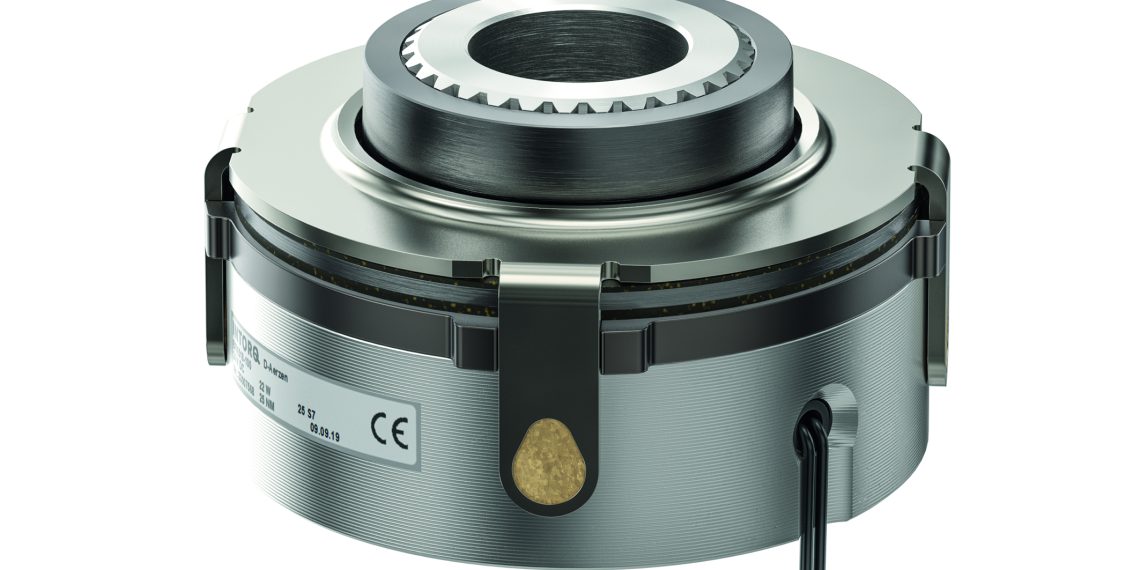With the BFK518 spring-applied brake, INTORQ from Aerzen, Germany, is setting new standards. The robust and easy-to-install holding brake with emergency stop function for servo motors offers maximum braking torque while requiring minimum space. A revolution on the market.
The company presented the new product as a world’s first at SPS 2019. “Our new spring-applied brake combines the advantages of a spring-applied brake with the performance of a permanent magnet brake,” explained Ralph Krone, Key Account Manager at INTORQ. With its high and reliable holding torque, small dimensions, and high temperature stability, the spring-applied brake suits a wide variety of applications – from robotics to packaging technology to production machines.
High braking torque due to new process
The extremely high braking torque of the BFK518 – considering its size – is the result of the large friction radius of the rotor and the small air gap, which is produced within a narrow tolerance range. A flange manufactured as a bent sheet metal part serves as a support structure that tightly abuts the rotor – this means the friction surface is used 100%.
“This new technology is revolutionary and makes our spring-applied brake unrivaled in the market. It ensures maximum reliability of the brake.” — Ralph Krone, Key Account Manager at INTORQ
Flexible mounting position, easy installation, stable price
Unlike permanent magnet brakes, spring-applied brakes do not require any setting work, which saves time and prevents errors. The BFK518 from INTORQ also does not require axial positioning, the friction disc is designed to automatically set the correct position. The installation position of the brake is flexible. It can be quickly and conveniently mounted on the motor’s fixed or floating bearing. Unlike permanent magnet brakes, electromagnetic spring-applied brakes do not require rare earth magnets, which keeps the cost of goods stable.
Safety during power failure
Spring-applied brakes are failsafe brakes. Multiple compression springs produce the braking torque in the de-energized state through frictional locking. Even if the power fails, the failsafe brake ensures complete safety. The brake is released electromagnetically: the coil of the stator is energized with DC voltage. The resulting magnetic flux works against the spring force to draw the armature plate to the stator.

















